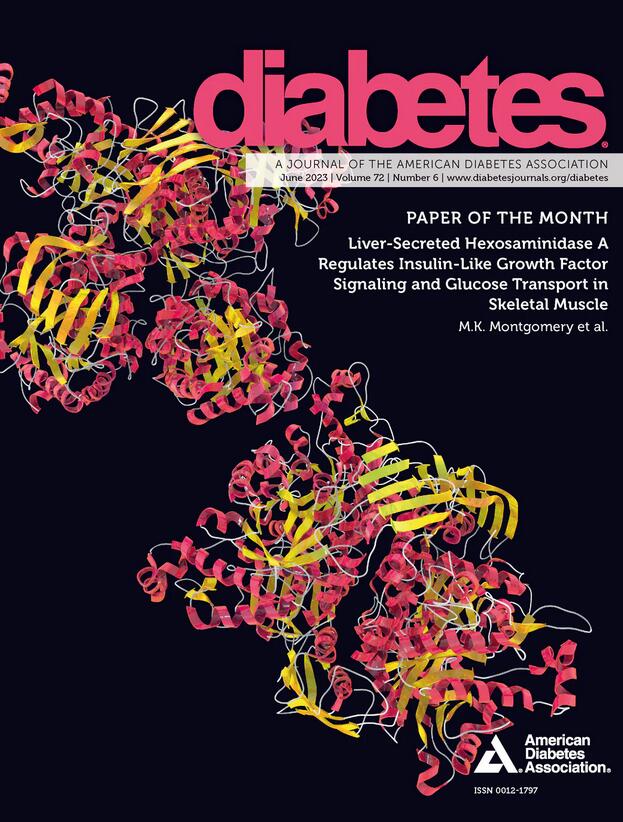729-P: Retrospective Effects of GLP-1 Receptor Agonists with and without Concomitant SGLT2 Inhibitor Use in Diabetic Renal Transplant Recipients after 12 Months
IF 7.5
1区 医学
Q1 ENDOCRINOLOGY & METABOLISM
引用次数: 0
Abstract
Introduction and Objective: GLP-1RAs & SGLT2i are treatments with benefits extending beyond glycemic control in kidney transplant recipients (KTR). These agents show promise in enhancing metabolic & cardiorenal outcomes in diabetic KTR, but evidence, especially for monotherapy vs. combination use, remains scarce. This study evaluates the effects of GLP-1RAs alone & combined with SGLT2i on metabolic, glycemic, renal, & cardiovascular outcomes in T2D KTR over 12 months. Methods: Retrospective cohort study of KTR with pre-transplant T2D. Baseline and 12-month data on metabolic, glycemic, renal, & CV outcomes were analyzed. The 2nd drug was initiated 3-9 months after the 1st. Paired t-tests were used, results expressed as mean±SEM. Results: 18 patients (59±2.7 yrs, 83% male) were studied. 12 (66.7%) received GLP-1RAs and 6 (33.3%) GLP-1RA+SGLT2i. GLP-1RA monotherapy significantly improved BMI (p<0.01), FPG (p=0.03), & A1c (p=0.07). No changes in BP, HR, Total Cholesterol, or HDL noted. Combination therapy showed significant improvements in LDL (p=0.08), eGFR (p=0.04), BUN (p<0.01), & Tacrolimus levels (p=0.05). No patients discontinued therapy due to side effects. Conclusion: GLP-1RAs & SGLT2i are effective & safe for T2D KTR, GLP-1RA improving glycemic & weight outcomes, while combination therapy offers added renal and lipid benefits, suggesting synergistic effects warranting further study. Disclosure F.M. Acosta: None. B. Hu: None. C. Manikkuttiyil: None. P. Frausto: None. M. Escobar Vasco: None. C. Solis-Herrera: Advisory Panel; Novo Nordisk, Bayer Pharmaceuticals, Inc. Funding UTHSA LSOM Pilot Grant729-P: GLP-1受体激动剂联合或不联合SGLT2抑制剂在糖尿病肾移植受者12个月后的回顾性疗效
简介及目的:GLP-1RAs;SGLT2i治疗对肾移植受者(KTR)的益处超出了血糖控制。这些药物有望促进新陈代谢。糖尿病KTR的心肾结局,但证据,特别是单一治疗与联合使用,仍然缺乏。本研究评估单独GLP-1RAs的作用&;联合SGLT2i对代谢、血糖、肾、血糖的影响;T2D KTR患者在12个月内的心血管结局。方法:KTR合并移植前T2D的回顾性队列研究。基线和12个月的代谢、血糖、肾脏等数据;分析CV结果。第二种药物在第一种药物的3-9个月后开始使用。采用配对t检验,结果以均数±SEM表示。结果:18例患者(59±2.7岁),其中83%为男性。12例(66.7%)接受GLP-1RA治疗,6例(33.3%)接受GLP-1RA+SGLT2i治疗。GLP-1RA单药治疗显著改善BMI (p= 0.01)、FPG (p=0.03);糖化血红蛋白(p = 0.07)。血压、心率、总胆固醇和高密度脂蛋白没有变化。联合治疗可显著改善LDL (p=0.08)、eGFR (p=0.04)、BUN (p= 0.01)、他克莫司水平(p=0.05)。没有患者因副作用而停止治疗。结论:GLP-1RAs &;SGLT2i是有效的&;T2D KTR安全,GLP-1RA改善血糖;而联合治疗提供了额外的肾脏和脂质益处,表明协同作用值得进一步研究。阿科斯塔:没有。胡:没有。C. Manikkuttiyil:没有。P. Frausto:没有。M. Escobar Vasco:没有。C. Solis-Herrera:咨询小组;诺和诺德,拜耳制药公司资助UTHSA LSOM试点补助金
本文章由计算机程序翻译,如有差异,请以英文原文为准。
求助全文
约1分钟内获得全文
求助全文
来源期刊

Diabetes
医学-内分泌学与代谢
CiteScore
12.50
自引率
2.60%
发文量
1968
审稿时长
1 months
期刊介绍:
Diabetes is a scientific journal that publishes original research exploring the physiological and pathophysiological aspects of diabetes mellitus. We encourage submissions of manuscripts pertaining to laboratory, animal, or human research, covering a wide range of topics. Our primary focus is on investigative reports investigating various aspects such as the development and progression of diabetes, along with its associated complications. We also welcome studies delving into normal and pathological pancreatic islet function and intermediary metabolism, as well as exploring the mechanisms of drug and hormone action from a pharmacological perspective. Additionally, we encourage submissions that delve into the biochemical and molecular aspects of both normal and abnormal biological processes.
However, it is important to note that we do not publish studies relating to diabetes education or the application of accepted therapeutic and diagnostic approaches to patients with diabetes mellitus. Our aim is to provide a platform for research that contributes to advancing our understanding of the underlying mechanisms and processes of diabetes.
 求助内容:
求助内容: 应助结果提醒方式:
应助结果提醒方式:


